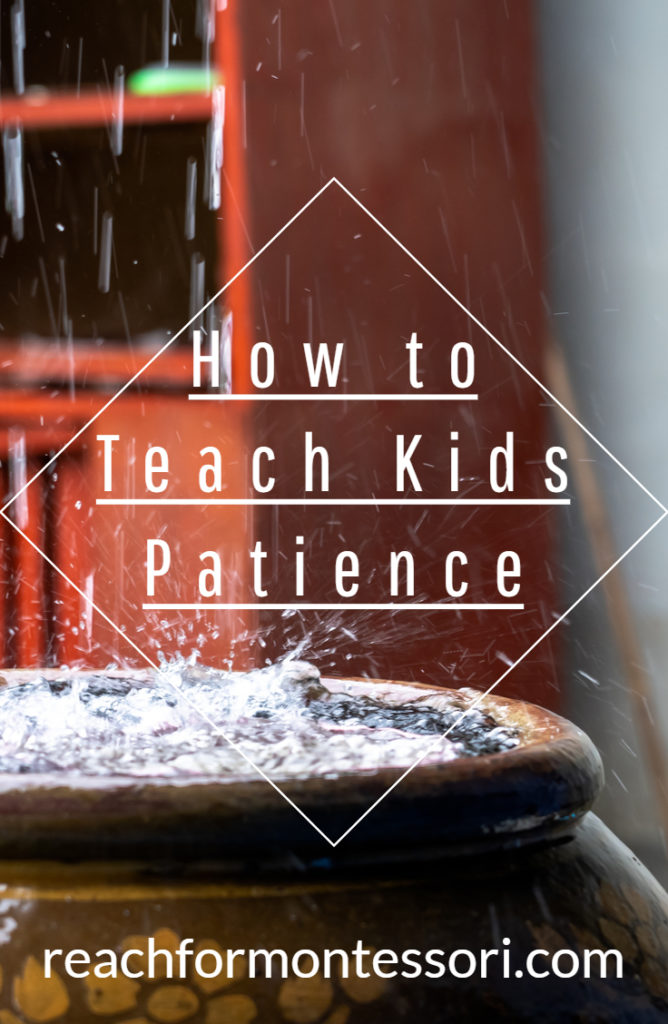It's no secret that kids have trouble waiting for things. This struggle can lead to a lot of frustration for parents and kids alike. Teaching kids patience is possible, though, and can even be done through fun activities.
For parents wanting to teach their children patience, it's important to understand that kids are not small versions of adults.
They lack maturity and the ability to fully grasp certain concepts.
Engaging in the following activities with your child will help them practice the skill of being patient, however, it will still be some time before they exhibit the skill consistently.
We should remember that even adults have trouble waiting for things we want sometimes.

10 activities for teaching kids patience
Taking turns
Sharing is hard for young kids. Learning how to take turns can provide a lot of great patience practice, though.
Be it taking turns holding a toy or setting a timer for taking turns with another activity, this is a great way to teach kids that not only do we have to wait for fun things sometimes, but there will be times when others are the ones having the fun while we wait – and that's ok.
Egg and spoon walk
This is often presented as a race. However, combining the concepts of racing and patience (slow and steady wins the race) is going to be a bit too abstract for young children to understand.
Place a strip of painter's tape at the starting point and the finish line.
Have your child carry an egg in a spoon while walking slowly and carefully to the finish line.
During and after the game, point out how being slow and careful helped them get to the finish line without breaking their egg.
Ask them how it felt to move slowly when they wanted so badly to get to the finish line.
Cooking and baking
There are so many opportunities for developing patience when you involve your child in cooking.
From stirring a mixture to a certain consistency to waiting for the dough to rise, cooking involves a lot of work and a lot of patience.
Grocery shopping
Grocery shopping is something that must be done. So, why not turn it into an opportunity to help your child develop patience?
While in the store, take turns looking at the list and selecting items from the shelves.
Gently remind your child that when it's your turn to get something from the shelf, they can look on and are welcome to speak to you, but they can not participate further.
When it's time to wait in line to check out, use the opportunity to talk to your child and come up with some ways to pass the time.
This helps them understand that they are capable of coming up with ways to cope with waiting.
Terrariums
Any activity that requires something to grow is great for helping a child develop patience.
The base for a great terrarium ecosystem is plants, which they will learn and take plenty of time to grow.
Setting up a terrarium is an opportunity to talk to your child about the time it takes things to grow. Small terrariums are great for teaching science and patience.
Pass the Package
This takes a little bit of preparation, but it's a really fun patience game with an added bonus of fine motor skills training.
For this activity, you wrap a toy or book in several layers of wrapping paper or cloth. Pass the item around, taking turns slowly unwrapping the item, one layer at a time.
The Silence Game
The silence game is something you will see being played in Montessori schools all over the world.
Though it's not specifically a patience activity, it can be used in the home for this purpose.
Dim the lights or draw the curtains in your home and turn off all electronics.
Sit face-to-face on the floor with your child and ask them to see how still and quiet they can be.
Ask them to be so quiet and still that they can hear very soft noises around the room or outside. Sit in silence for several minutes.
When you're finished, ask your child how it felt. Patience requires us to sit with our feelings…this is great practice.
In addition to promoting patience, the silence game helps with a child's overall emotional intelligence.
Hand on the Shoulder
This activity helps teach patience and it's also a lesson in grace and courtesy.
In Montessori classrooms, children are taught how to place their hand on someone's shoulder to let them know they would like their attention instead of verbally interrupting them.
For this activity, you'll need a helper. Tell your child to gently place their hand on your shoulder while you speak to your designated helper.
When you are done speaking with the other person, turn to your child and thank them for waiting so patiently.
You can practice this several times, slowly increasing the amount of time your child has to wait, within reason.
Catching rain drops
Place a clear jug on the driveway or porch next time it rains and mark it with just below the expected amount of rainfall. Ask your child if they think the jug will fill up fast or slow.
Check in on the jug every several minutes and talk to your child about how tiny the raindrops are and how it can take a long time for those tiny drops to fill even a small portion of a big jug.
Memory matching
Kids love memory-matching games.
Not only are they great for fine motor, spatial recognition, and memory, they are great for teaching kids patience.
Finding matches often takes many attempts. This helps children build both patience and frustration tolerance.
If there are multiple players, kids also learn patience because they have to wait during that time.

Montessori and teaching kids patience
As you can see, along with some organized activities, activities of practical life are a great way to teach a child patience. Montessori focuses heavily on Practical Life, particularly in the early years.
Montessori also provides an organized and predictable environment for kids; perfect for teaching kids patience.
Cheers and don't forget to subscribe!

The old egg-and-spoon method. That’s really cool. Thanks for a new way to look at this game. I also came up with some great activities to teach patience. Take a look here https://aliciaortego.com/teaching-kids-patience/